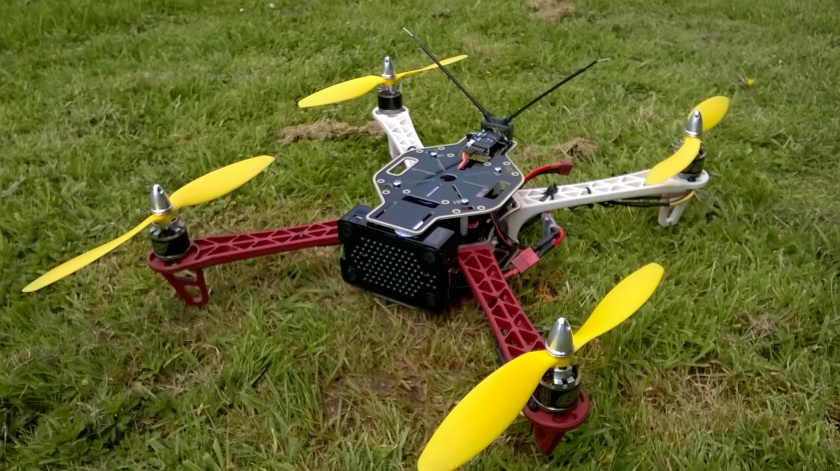
Groundhog UAV curved line following



Project Recap:
My Masters project within the Bristol Robotics Laboratory is to design a system of UAVs that can be deployed in groups to co-operatively map the structure of their environment. This is envisaged as an internal environment, however it is expected that the technologies developed may be additionally adapted for external mapping. This series of posts documents key elements of the project. So far we have set the objectives and built an airframe based on a standard 450 quadcopter configuration.
Post Objective:
An on-board Raspberry Pi will have overall control of the UAV. This post shows how we can set up communications between the Raspberry Pi 2 and a Pixhawk flight management unit, using the Mavlink messaging protocol, so that the Raspberry Pi can take control of navigation.

Project Recap:
My Masters project within the Bristol Robotics Laboratory is to design a system of UAVs that can be deployed in groups to co-operatively map the structure of their environment. This is envisaged as an internal environment, however it is expected that the technologies developed may be additionally adapted for external mapping. This series of posts documents key elements of the project.
Post Objective:
This post shows the construction of the new airframe being used for development.
Continue reading “02. MRes in UAV Co-operative Mapping. Airframe Construction.”

Research A major part of my Masters by Research at the Bristol Robotics Laboratory is the research project itself. I am developing unmanned aerial vehicles (UAVs) with the following capabilities:
Continue reading “01. MRes in UAV Co-operative Mapping. Objectives.”